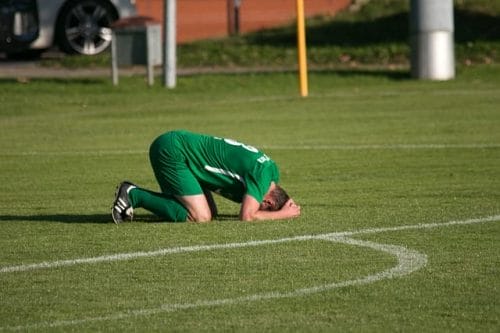All You Need to Know About Soccer Penalties: The Ultimate Guide for Players and Fans
Soccer penalties are some of the most exhilarating and high-stakes moments in the game. Whether you’re a player or a passionate fan, understanding the ins and outs of penalties can greatly enhance your appreciation for the sport. From the rules and regulations to the strategies and techniques, this ultimate guide will equip you with the knowledge needed to navigate the world of soccer penalties.
Join us as we dive deep into the intricacies of penalty kicks, exploring topics such as foul recognition, penalty shootout tactics, and the psychological aspects that can make or break a player’s success. Whether you want to impress your friends with your soccer savvy or simply want to gain a deeper understanding of this thrilling aspect of the game, this guide has got you covered.
1. Understanding the rules of soccer penalties
Understanding the rules of soccer penalties is crucial for both players and fans alike. Penalties are one of the most intense and high-stakes moments in a soccer game, often determining the outcome of a match.
Firstly, it’s important to know how a penalty is awarded. A penalty kick is given to a team when a major foul occurs inside the opponent’s penalty box. This can include offenses such as a dangerous tackle, handball, or a deliberate foul that denies a clear goal-scoring opportunity.
When a penalty kick is awarded, the ball is placed on the penalty spot, which is 12 yards away from the goal line. The goalkeeper must remain on the goal line until the ball is kicked.
The player taking the penalty, usually chosen by their team, must adhere to specific rules. They cannot touch the ball twice in a row before another player touches it, and they must wait for the referee’s whistle before taking the kick. The player taking the penalty kick also cannot feint or deceive the goalkeeper in a way that causes them to move from the goal line before the kick is taken.
During the penalty kick, all other players, except for the goalkeeper and the player taking the penalty, must be outside the penalty box. They can only enter the box once the ball has been kicked.
If the ball crosses the goal line and enters the goal without any infringement of the rules, a goal is awarded. However, if the ball hits the goalpost, crossbar, or is saved by the goalkeeper, play continues as normal. If the goalkeeper moves off the goal line before the ball is kicked, it may result in a retake.
Understanding the rules of soccer penalties is not only important for players to perform within the laws of the game but also for fans to fully appreciate and analyze the decisions made by referees. By knowing the intricacies of penalty kicks, you can enhance your enjoyment and understanding of this thrilling aspect of the beautiful game.
2. Recognizing fouls and earning a penalty
Recognizing fouls and earning a penalty is an essential aspect of the game of soccer. Whether you are a player or a fan, understanding the rules and knowing when a foul has been committed can greatly impact the outcome of a match. There are several types of fouls that can result in a penalty, and it is crucial to be able to recognize them.
One common foul that can lead to a penalty is a handball. If a player deliberately handles the ball with their hand or arm, it is considered a handball and can result in a penalty. The referee will look for deliberate intent, so accidental contact with the hand or arm may not necessarily result in a penalty.
Another foul that can lead to a penalty is a foul committed inside the penalty area. If a player is fouled by an opponent within the penalty area, a penalty kick is awarded. This can happen if a defender trips or pushes an attacking player, denying them a clear goal-scoring opportunity.
Additionally, a foul that prevents a player from advancing towards the goal can also result in a penalty. This can occur if a defender obstructs the path of an attacking player or tackles them from behind, impeding their progress.
It is important for players and fans to understand that the decision to award a penalty lies in the hands of the referee. They have the final say on whether a foul has been committed and if it warrants a penalty. It is crucial to respect their decision and to refrain from arguing or disputing their calls.
To become more knowledgeable about recognizing fouls and earning a penalty, it is advisable to study the laws of the game and watch professional matches. By familiarizing yourself with the rules and observing how fouls are identified, you can develop a better understanding of the game and enhance your overall soccer experience.
3. Mastering penalty kick techniques
Mastering penalty kick techniques is crucial for both soccer players and fans who want to understand the intricacies of this high-pressure situation. A penalty kick is a direct free-kick taken from the penalty spot, which is 12 yards away from the goal line. With the goalkeeper as the only obstacle, it’s an opportunity for players to score a goal and for fans to witness a thrilling moment.
First and foremost, it’s essential to practice and hone your accuracy. A successful penalty kick requires precise placement of the ball, aiming for the corners of the goal where the goalkeeper is least likely to reach. This can be achieved through repetitive training, focusing on proper foot placement and striking technique.
Another significant aspect to consider is mental preparation. Penalty kicks are often accompanied by immense pressure, and it’s crucial to remain calm and composed. Visualizing a successful kick, controlling nerves, and maintaining focus are all key factors in mastering this technique. By practicing visualization exercises and adopting relaxation techniques, players can improve their mental strength and increase their chances of success.
Furthermore, it’s important to vary your technique to keep the goalkeeper guessing. The power and placement of the shot can be adjusted, creating unpredictability that can catch even the most skilled goalkeepers off guard. Utilizing a combination of power and finesse, players can deceive the goalkeeper and increase their chances of scoring.
Lastly, penalty kick takers should be aware of the goalkeeper’s tendencies and study their previous performances. Analyzing their positioning, reaction times, and preferred diving direction can give players an advantage. By observing and identifying patterns, players can adjust their technique to exploit any weaknesses or vulnerabilities in the goalkeeper’s approach.
In conclusion, mastering penalty kick techniques requires practice, mental preparation, adaptability, and a keen understanding of the goalkeeper’s tendencies. By incorporating these strategies, players can increase their chances of scoring and fans can appreciate the skill and artistry behind a successful penalty kick.
4. Strategies for penalty shootouts
Penalty shootouts in soccer can be intense and nerve-wracking for both players and fans. It is the ultimate test of skill, composure, and strategy. As a player or fan, understanding the strategies involved in penalty shootouts is crucial to increase the chances of success.
One strategy that players often employ is studying the goalkeeper’s tendencies. By observing the goalkeeper’s previous penalty saves, players can identify patterns or weaknesses that they can exploit. For example, if the goalkeeper tends to dive to one side more often than the other, the shooter can aim for the opposite side to increase the chances of scoring.
Another strategy is to vary the placement and speed of the shots. Shooting consistently to the same spot can make it easier for the goalkeeper to anticipate and save the penalty. By mixing up the placement and speed, players can keep the goalkeeper guessing and increase the chances of scoring.
Mental strength is also crucial during penalty shootouts. Remaining calm and composed under pressure can give players an edge. Visualizing success, focusing on technique, and blocking out distractions can help players maintain their confidence and execute their shots effectively.
Additionally, the order of penalty takers can play a significant role in the outcome of the shootout. Coaches often strategize the order based on the players’ skills and confidence levels. Putting the most reliable penalty takers first can set a positive tone and put pressure on the opposing team. Conversely, saving a strong penalty taker for later can create an advantage if the shootout goes into sudden death.
Ultimately, penalty shootouts require a combination of skill, strategy, and mental fortitude. By understanding and implementing these strategies, both players and fans can enhance their understanding and enjoyment of this thrilling aspect of soccer.
5. The psychological aspects of penalty kicks
When it comes to penalty kicks in soccer, the psychological aspect plays a significant role in determining the outcome. Penalty kicks are a high-pressure situation for both the shooter and the goalkeeper, and understanding the psychological dynamics can give players and fans valuable insights into the game.
For the shooter, confidence is key. Stepping up to take a penalty kick requires mental strength and self-belief. The shooter must block out any doubts or distractions and focus solely on executing the shot. Visualization techniques can be helpful, as players imagine themselves successfully converting the penalty kick before even stepping onto the field. Maintaining composure and staying calm under pressure is also crucial, as anxiety or nerves can easily lead to missed opportunities.
On the other hand, goalkeepers also face immense psychological challenges during a penalty kick. They must anticipate the shooter’s intentions, analyze their body language, and make split-second decisions on which way to dive. Mind games between the shooter and goalkeeper often come into play, with shooters trying to intimidate the goalkeeper and goalkeepers attempting to psych out the shooter. The ability to stay focused, read the shooter’s movements, and trust their instincts is paramount for a goalkeeper in this scenario.
Psychological factors can also influence the outcome of penalty kicks for both parties. Shooters who have successfully converted penalties before may feel more confident and perform better under pressure. Conversely, shooters who have missed penalties in the past may carry that burden with them, potentially affecting their performance. Goalkeepers who have a reputation for saving penalties may instill doubt in the shooter’s mind, gaining a psychological advantage.
Understanding these psychological aspects can help players and fans appreciate the complexity of penalty kicks. It highlights the mental fortitude required to succeed and the mind games that unfold between the shooter and goalkeeper. Whether you’re a player looking to improve your penalty-taking skills or a fan wanting to gain deeper insights into the game, recognizing the psychological factors at play in penalty kicks can enhance your understanding and enjoyment of the sport.
6. Conclusion
In conclusion, understanding soccer penalties is essential for both players and fans who want to fully enjoy the game. Whether you’re on the field or watching from the stands, penalties can have a significant impact on the outcome of a match. As a player, knowing the rules and techniques involved in taking or defending penalties can give you a competitive edge and boost your team’s chances of success.
For fans, having a good grasp of penalty rules adds to the excitement and allows for a deeper appreciation of the strategic decisions made by players and coaches. From the different types of penalties to the responsibilities of the players involved, this ultimate guide has covered all the important aspects of soccer penalties. So whether you’re a seasoned player or a passionate fan, be sure to keep these insights in mind as you immerse yourself in the world of soccer penalties.

